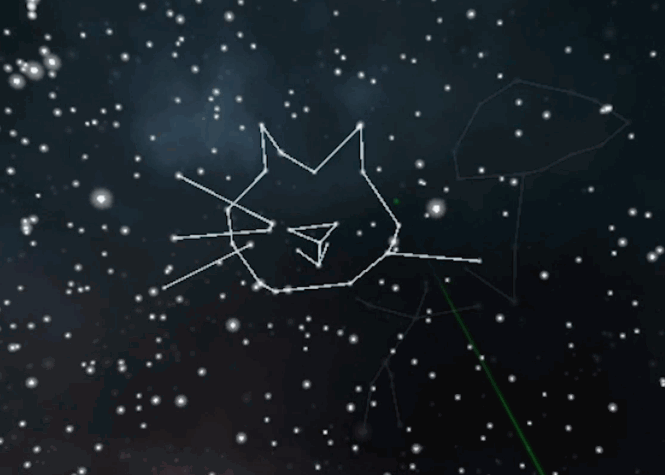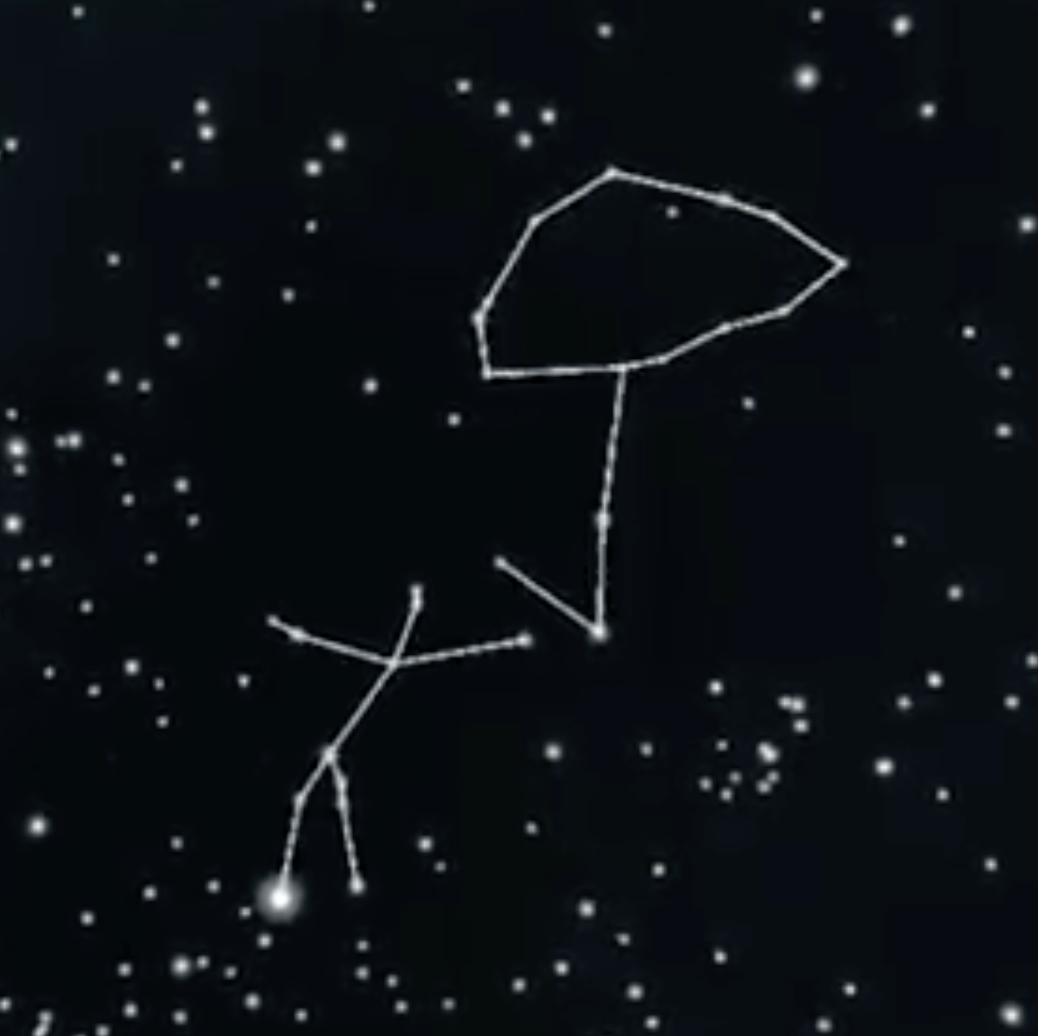ASTRAEA
A Constellation Drawing Tool for VR
Astraea is a virtual reality app for Daydream in which the user can draw lines to connect stars, designing their own constellations. It was named after the figure in Greek mythology Astraea, who is daughter of Astraeus and Eos (gods of dusk and dawn, respectively). Her name means “starry night” and she is depicted in the constellation Virgo.
The app puts the user in the position of stargazer, in the middle of a wide open clearing on a clear night. They draw using a green stargazing laser, and can also use the controller to rotate the stars to their desired position. All stars’s magnitude and position came from the HYG database, and hovering over a star displays its name (if the database has it).

Since constellations– and the stars in general–are so connected to myths, legends, and stories, I imagine Astraea as an invitation for people to tell their own stories. By drawing their characters and symbols in the sky, users give them a place of importance, and can identify them in the real sky later. At the very least, it’s a fun, relaxing experience.

Design Process
About half of the work time for this project was spent just coming up with the idea. I was originally going to make something using GPS and tracking multiple people, but later decided that the networking involved would be too difficult. Then I thought about ways to constrain what the user was able to draw, but in a fun way. My sisters and I like to play a game where one of us draws a pseudorandom bunch of 5-10 dots, and another has to connect them and add details to make a decent picture (though I’m sure we didn’t invent this, I don’t know where it came from. It reminds me a bit of “Retsch’s Outlines” that Jonah Warren mentioned in “The Act of Drawing in Games”).
Shortly after that, I landed on constellations. I thought about how (at least in my experience), many constellations barely resemble the thing they were supposed to be. Even with the lines in place, Ursa Major looks more like a horse than a bear to me… This made me think that constellation creation and interpretation could be a fun game, kind of like telephone. I made the following concept art for our first check-in, depicting a three-step process where someone would place stars, someone else would connect them, and a third person would interpret the final picture. This put the first person in the position of a Greek god, placing stars in the sky to symbolize something, and the other people in the position of the ancient Greeks themselves, interpreting (and hopefully comedically misinterpreting) their god’s message.

Though this was a kind of fun concept, it was definitely missing something, and my discussion group helped clarify the idea a great deal. They suggested using the positions of real stars, and putting it in VR. After that, I designed and built Astraea–not as a game but a peaceful drawing experience.
Design Decisions
I don’t have time to discuss every decision I made for this project, but I can talk about a few interesting ones.
Why Daydream?
Google Daydream is a Mobile VR for Android devices, and as such, it is significantly more limited than higher-end hardware like the Oculus Rift or HTC Vive. It has only 3 degrees of freedom, which wasn’t a big problem for the stargazing setting, but its less precise controller makes selecting small stars trickier than would be ideal. The biggest problem that came with using mobile VR is the lower resolution and the chromatic aberration that appears around the edges of one’s vision. This is especially noticeable in Astraea, as the little stars turn into little rainbow balls if you look off to the side.
All of that said, it was still important to me that Astraea was a mobile application rather than a full room-scale VR game. Platforms like Vive and Oculus are not as accessible to people as mobile VR, and I definitely don’t envision this as an installation piece somewhere. Even for people with high-tech headsets in their home, the big controller/HMD/tracker setups for them feel too intense for Astraea. No one uses a Vive while lying in bed, and I want Astraea to be cosy, easy to put on for some stargazing before you go to sleep. So mobile VR worked really well for that. Daydream just happened to be the type of mobile VR that I have, so that’s why I picked it. I’ve been meaning to learn Daydream development, and I finally did it for this project, so that’s a bonus!
Why do the stars look that way?
Way too much time went into designing the stars for Astraea. They went through many iterations, and I actually went outside for some stargazing “research.” I determined that stars (at least the three visible in Pittsburgh) look like small bright points of light, with a softer, bigger, halo of light around them depending on their brightness. Their “twinkle” looks like their halo growing, shrinking, and distorting, but their center point is fairly constant. That’s basically what I implemented. Small spheres for the stars themselves, with sprites that look like glowing circles around them. The glowing circles change their size randomly, and the stars are sized based on how bright they are from Earth. I did not include all 200,000+ stars in the dataset; instead I filtered out the ones with Magnitude higher than 6 (ie. the very dim ones) so the user wouldn’t have to deal with tiny stars getting in the way. This left me with about 8,000 stars, which works pretty well.
Why does everything else look that way?
The ground is there just to block out the stars below you. The treeline is to give it a hint of realism. But really, they are both supposed to be very simple. I want your attention directed upwards. The laser is green because that’s the actual color laser that stargazers use. My friend told me this when I was lamenting how I didn’t know what to make the laser look like. It turns out that green and blue are the only colors that are powerful enough for this sort of thing, and green is used in practice like 90% of the time. I thought that was a neat fact, so I included it in the game. I chose to have no moon because it would block stars, get in the way, and be distracting. So you can pretend it’s a new moon. However, I might put a moon back in later (or a moon on/off option), in case some people want to incorporate it into their drawings.

Other Thoughts
I am very proud of Astraea. I genuinely enjoy using it, and I learned a lot about mobile VR development in the creation of it. There are a few more features I want to add and touch-ups I want to make, but I intend to make this app publicly available in the future, and hopefully multi-user so people can draw for each other in real time as they share their stories.